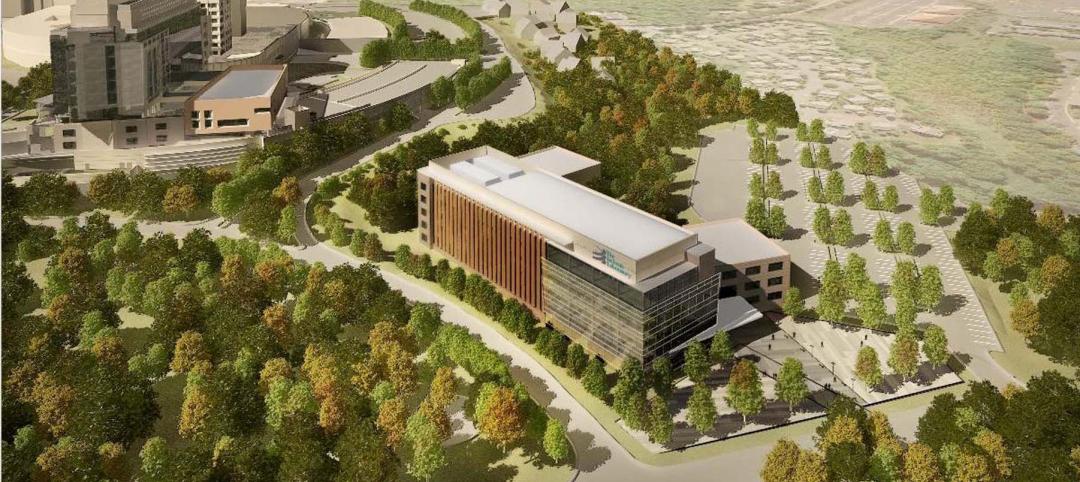The built environment has a profound impact on our natural environment, economy, health, and productivity, according to the US Green Building Council (USGBC). In the United States alone, buildings account for:
* 65% of electricity consumption
* 36% of energy use
* 40% of greenhouse gas emissions
* 30% of raw materials use
* 30% of waste output (136 million tons annually)
* 12% of potable water consumption
When you think about these statistics, it’s no wonder that a movement toward sustainability has been underway for the past 16 years. LEED (Leadership in Energy and Environmental Design), first introduced in 2000, is an ecology-oriented building certification program run under the auspices of the USGBC. LEED concentrates its efforts on improving performance across five key areas of environmental and human health: energy efficiency, indoor environmental quality, materials selection, sustainable site development and water savings.
The LEED rating is the globally accepted benchmark for the design, construction, and operation of high-performance green buildings. LEED certification provides independent, third-party verification that a building project is environmentally responsible and a healthy place to live and work.
Early adopters in the healthcare sector struggled with adapting LEED standards to the special needs of healthcare operations with limited success. Recognizing this, in 2009 the USGBC launched LEED for Healthcare, codifying in the LEED structure principles from the Green Guide for Healthcare. In 2011, LEED for Healthcare was updated and rebranded as LEED BD+C: Healthcare. This designation seeks to align the points of emphasis from the traditional LEED framework to the realities of the healthcare environment. For example, many of LEED’s Indoor Environmental Quality requirements were modified to reflect the need for infection prevention, as well as the existing code requirements for ventilation in healthcare facilities. Since its launch, over 40 different projects worldwide have met LEED criteria to be certified by the USGBC under LEED for Healthcare.
The pursuit of LEED can come with a price tag, in some cases adding a 1% to 3% premium to the overall construction budget. With tight budget constraints placed on healthcare executives, paying the additional premium to be “green” and achieving the project’s financial goals can be seen as mutually exclusive. However, when considering the triple bottom line—Pocketbook, People, and Planet—going green can be a responsible decision.
Pocketbook
Energy costs represent a large portion of healthcare expenditures. Recognizing this, over one fifth of the available LEED points are tied to energy performance gains. At a minimum, LEED requires a 10% improvement in building performance rating over the baseline case. Initially, achieving these credits can be costly. However, a payback in energy savings can be realized down the road. For example, high-efficiency chillers can cost 20% more than comparable standard units, but installing these more efficient units can result in up to a 42% reduction in the energy required for space cooling and a potential 48% savings in cooling tower use.
In addition, process water used to operate building systems such as boilers, chillers, cooling towers, and sterilizers comprises 75% of the water used at hospitals. Even modest improvements in process water efficiency (e.g. using condensate for cooling tower makeup water) can save institutions thousands of gallons of water annually.
Lighting upgrades, coupled with smart controls and increased natural lighting, can decrease electrical usage while creating an environment more conducive to healing. Recent advances in LED lighting technology have in many instances made the first cost of these fixtures equal to or less expensive than fluorescent or incandescent options.
People
Increasing connections to the natural environment and available natural light are important components of the LEED framework. A growing body of research shows positive correlation between maximizing natural light and reduced lengths of stay. Prudent owners are requesting that their designers go well beyond the code minimum requirements for clear views in order to take advantage of this correlation.
Giving patients control over their environment has been linked with better patient outcomes and higher patient satisfaction scores. Dimmable lighting systems, operable window shades, and in-room thermostats allow the in-room environment to be tailored to the particular needs of each patient. Coupled with a robust building automation system, these control points can also be used to reduce energy consumption by avoiding unnecessarily lighting or heating unoccupied spaces.
Building green can also increase staff satisfaction. Recent studies have shown a link between LEED facilities, staff comfort, and satisfaction levels. For example, a 2014 study in the Journal of Hospital Administration showed higher levels of staff engagement at the LEED Platinum Dell Children’s Hospital in Austin, Texas, compared to two other non-LEED hospitals. In addition, staff turnover decreased after moving from Dell’s predecessor into the new LEED facility.
Better indoor air quality-that is, the control of both internally generated and external pollutants-will also have a positive impact on the well-being of building occupants. Careful selection of building materials, along with proper ventilation, operation, and maintenance can improve indoor air quality. Improvements in the indoor environment of our healthcare facilities can have a profound impact on sensitive populations such as children, the elderly, and patients who are immunocompromised or have respiratory problems.
Planet
In 2009, researchers estimated that greenhouse gas emissions related to healthcare activities represented 8% of the total in the United States. More recent research has shown that the healthcare sector’s carbon footprint is growing, increasing by more than 30% over the past 10 years.
Greening both the built environment and the supply chain provides hospitals the opportunity to live up to their obligation to “first, do no harm.” By making environmentally conscious choices in the design and construction of their facilities, organizations can reduce their impact to the planet. As noted above, reduction in energy and water usage will show up on financial statements, but in considering the decision to go green administrators should weigh such non-financial measures as:
* waste diverted from landfills
* reduction in water drawn from aquifers
* reduction in wastewater discharged to local waterways
* reduction in carbon emissions from power plants, boilers, and generators
* access to green transit options, which lower the environmental impacts of staff and patient commuting
* use of sustainable building materials and products
Conclusion
As we approach the end of the second decade of LEED, the financial costs and benefits of going green are well documented. In many cases, due to increased demand for environmentally friendly products, the cost of implementing certain green strategies is negligible. However, there are still areas where green choices do not pass a purely financial test.
Fortunately, healthcare systems are not purely in the business of generating financial returns. Healthcare organizations must also care for people they encounter—patients, staff, and visitors—and the world around them. Considering the triple bottom line, pocketbook, people, and planet, gives healthcare executives additional justification for using green building strategies to advance the organization’s mission.
Related Stories
| Feb 28, 2012
Griffin Electric completes Medical University of South Carolina project
The 210,000-sf complex is comprised of two buildings, and houses research, teaching and office areas, plus conference spaces for the University.
| Feb 22, 2012
CISCO recognizes Gilbane for quality construction, design, and safety
The project employed more than 2,000 tradespeople for a total of 2.1 million hours worked – all without a single lost-time accident.
| Feb 14, 2012
The Jackson Laboratory announces Gilbane Building Co. as program manager for Connecticut facility
Gilbane to manage program for new genomic medicine facility that will create 300 jobs in Connecticut.
| Feb 13, 2012
WHR Architects renovation of Morristown Memorial Hospital Simon Level 5 awarded LEED Gold
Located in the Simon Building, which serves as the main entrance leading into the Morristown Memorial Hospital campus, the project comprises three patient room wings connected by a centralized nursing station and elevator lobby.
| Feb 13, 2012
New medical city unveiled in Abu Dhabi
SOM’s design for the 838-bed, three-million-square foot complex creates a new standard for medical care in the region.
| Feb 10, 2012
Mortenson Construction research identifies healthcare industry and facility design trends
The 2012 Mortenson Construction Healthcare Industry Study includes insights and perspectives regarding government program concerns, the importance of lean operations, flexible facility design, project delivery trends, improving patient experience, and evidence-based design.
| Jan 31, 2012
Fusion Facilities: 8 reasons to consolidate multiple functions under one roof
‘Fusing’ multiple functions into a single building can make it greater than the sum of its parts. The first in a series on the design and construction of university facilities.
| Jan 31, 2012
Suffolk Construction to manage Lawrence & Memorial Hospital Cancer Center project in Waterford, Conn.
Leading construction management firm overseeing one of first healthcare projects in the country to utilize innovative IPD process.
| Jan 16, 2012
Suffolk completes construction on progressive operating suite
5,700 square-foot operating suite to be test bed for next generation of imaged-guided operating techniques.
| Jan 4, 2012
HDR to design North America’s first fully digital hospital
Humber River is the first hospital in North America to fully integrate and automate all of its processes; everything is done digitally.

















